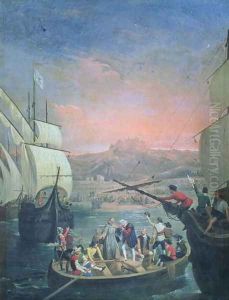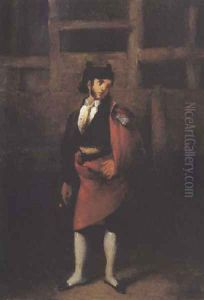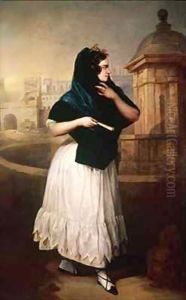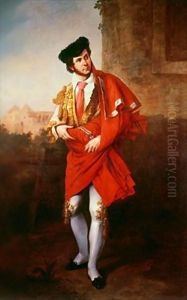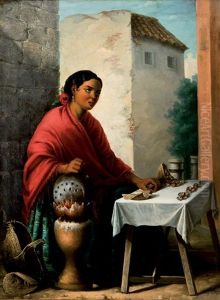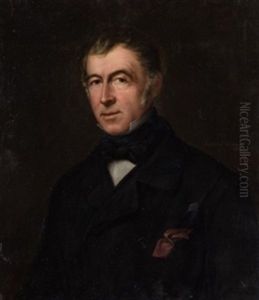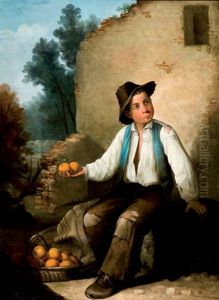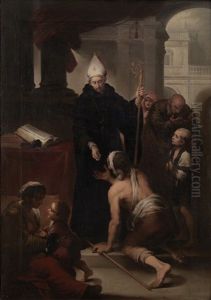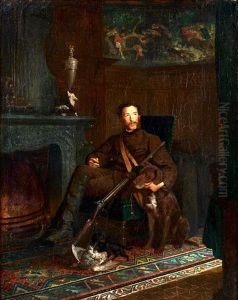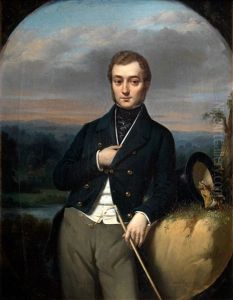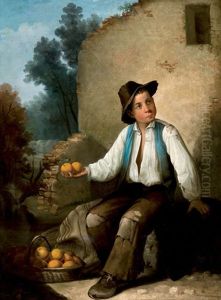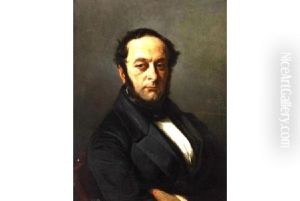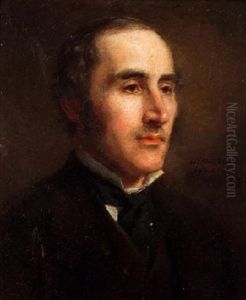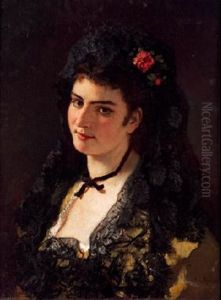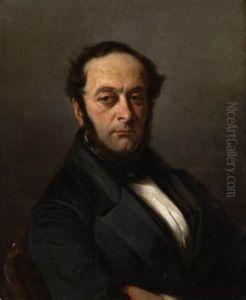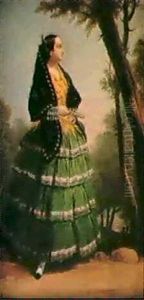Antonio Cabral Bejarano Paintings
Antonio Cabral Bejarano was a notable Spanish painter, born in 1798 in Seville, Spain. He was a distinguished artist of the 19th century, primarily associated with the Romantic movement, which was characterized by its emphasis on emotion and individualism as well as the glorification of the past and of nature.
Bejarano showed an early interest in art and was initially trained by his father, who was also a painter. He further honed his skills at the Real Academia de Bellas Artes de Santa Isabel de Hungría, the premier art academy in Seville, where he was influenced by the works of old masters and contemporary artists alike. His education there laid the foundation for his future work, which was marked by a masterful use of color and a keen attention to detail.
Throughout his career, Bejarano focused on religious themes and portraiture, which were popular among patrons of the time. His religious works often depicted scenes from the Bible and the lives of saints, executed with a rich palette and a dramatic sense of lighting, reflecting the influence of Baroque traditions. Meanwhile, his portraits were notable for their psychological depth and realism, capturing the character and status of his sitters.
In addition to his painting, Bejarano was also an educator. He became a professor at the Real Academia de Bellas Artes de Santa Isabel de Hungría, where he once studied. In this role, he influenced a new generation of Spanish artists and contributed to the cultural life of Seville.
Bejarano's work was well-received in his lifetime, and he exhibited in various important art exhibitions, gaining recognition and accolades. His legacy includes a number of significant works that remain on display in museums and collections, especially in Spain, where his contributions to the Romantic movement have been celebrated.
Antonio Cabral Bejarano passed away in 1869, leaving behind a body of work that continues to be studied and appreciated for its artistic merit and historical significance within the context of Spanish art history.
